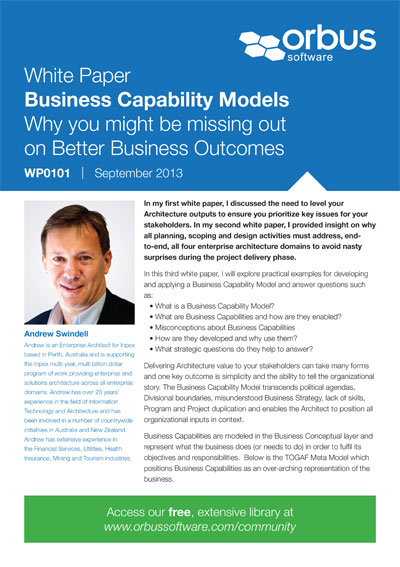Andrew Swindell's third paper in a series discussing Business Capability Models.
In my first white paper, I discussed the need to level your Architecture outputs to ensure you prioritize key issues for your stakeholders. In my second white paper, I provided insight on why all planning, scoping and design activities must address, endto-end, all four enterprise architecture domains to avoid nasty surprises during the project delivery phase.
In this third white paper, I will explore practical examples for developing and applying a Business Capability Model and answer questions such as:
- What is a Business Capability Model?
- What are Business Capabilities and how are they enabled?
- Misconceptions about Business Capabilities • How are they developed and why use them?
- What strategic questions do they help to answer?
Delivering Architecture value to your stakeholders can take many forms and one key outcome is simplicity and the ability to tell the organizational story. The Business Capability Model transcends political agendas, Divisional boundaries, misunderstood Business Strategy, lack of skills, Program and Project duplication and enables the Architect to position all organizational inputs in context.
Business Capabilities are modeled in the Business Conceptual layer and represent what the business does (or needs to do) in order to fulfil its objectives and responsibilities. Below is the TOGAF Meta Model which positions Business Capabilities as an over-arching representation of the business.
Please login to continue reading this white paper, or register to download today.
